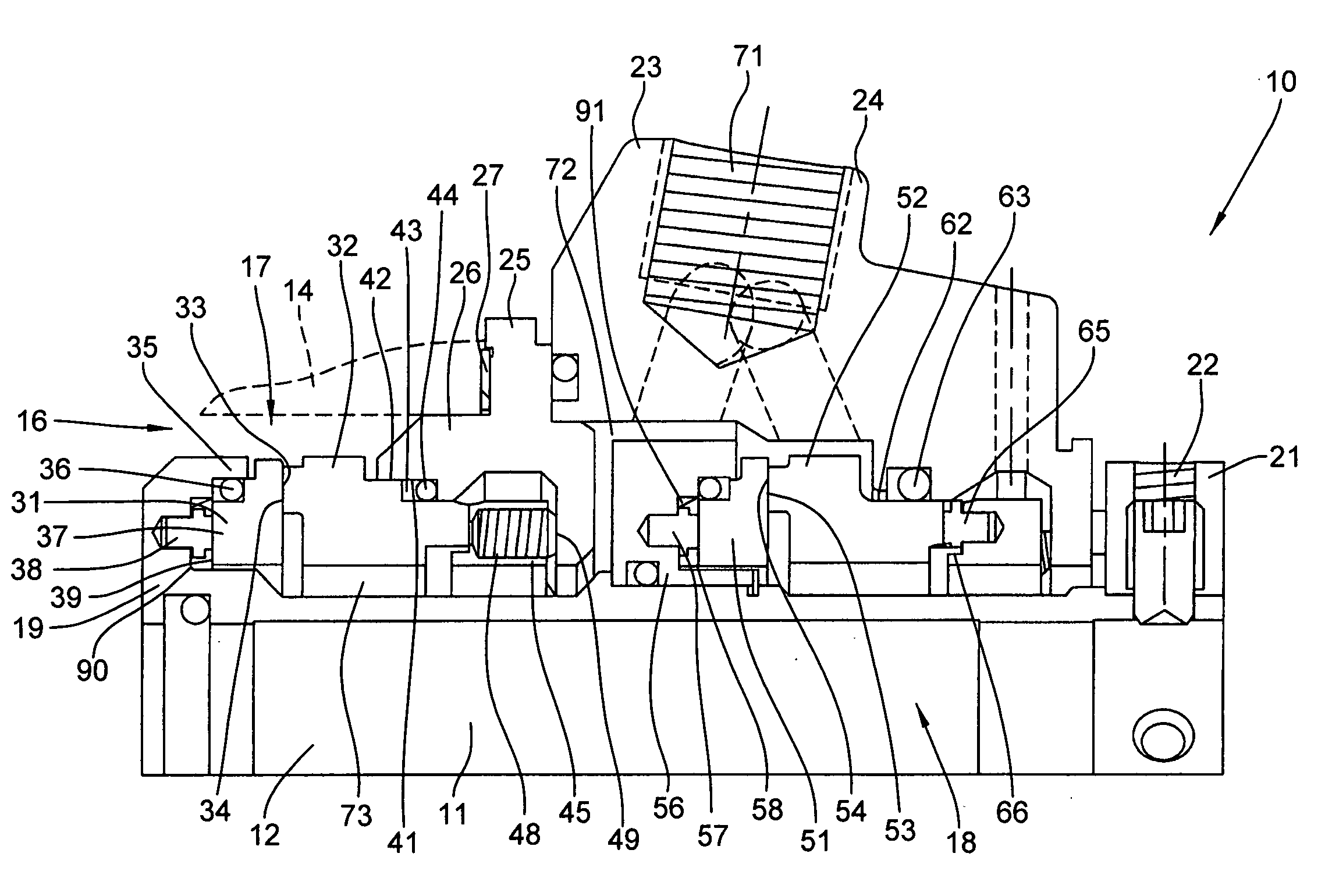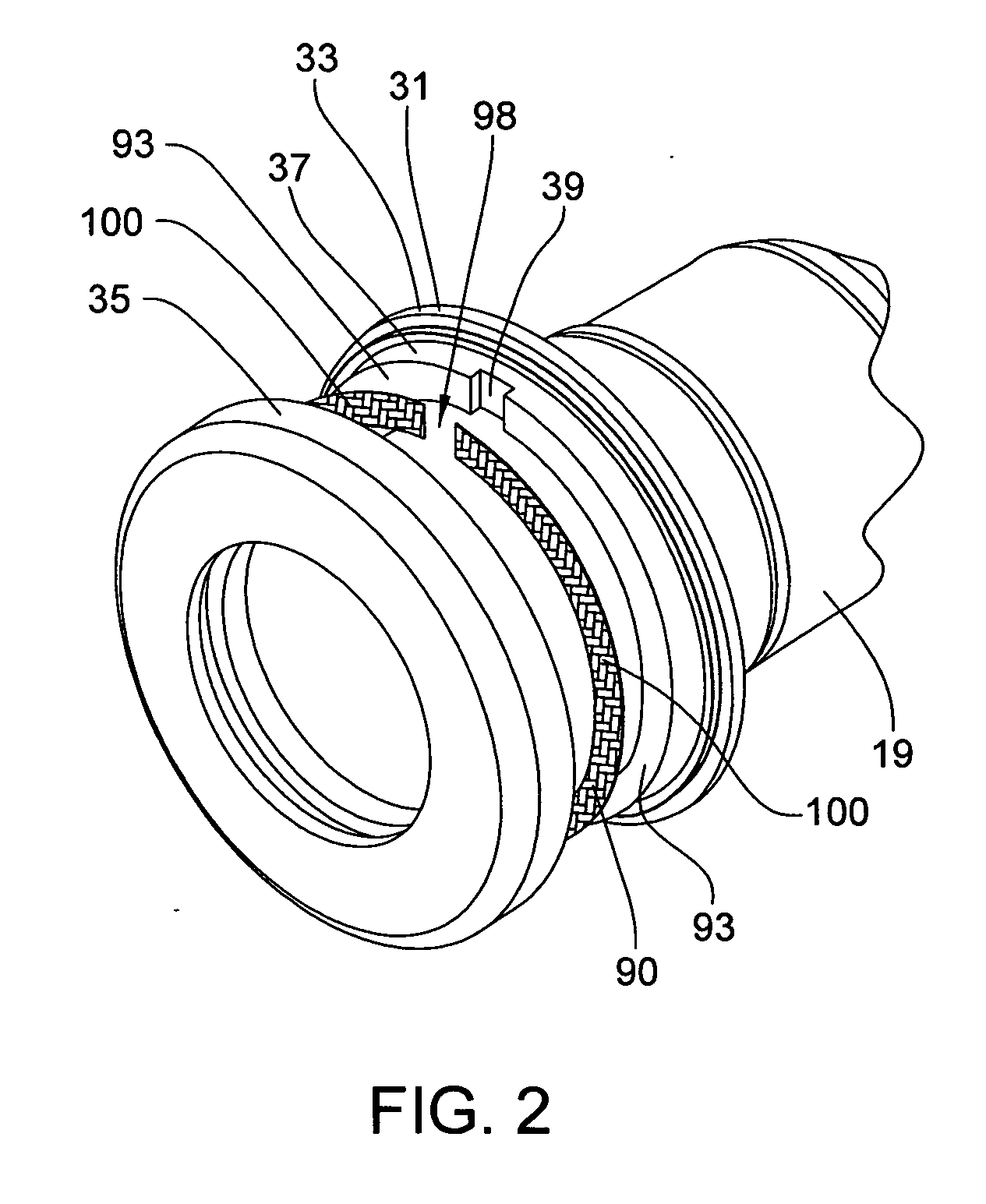Upset resistant mechanical seal
a mechanical seal and heat resistance technology, applied in the direction of engine seals, mechanical apparatus, engine components, etc., can solve the problems of excessive heat generation of mechanical seals, air gaps between parts, excessively high seal face temperatures, etc., to improve conduction, increase contact, and high thermal conductivity
- Summary
- Abstract
- Description
- Claims
- Application Information
AI Technical Summary
Benefits of technology
Problems solved by technology
Method used
Image
Examples
Embodiment Construction
[0026]Referring to FIG. 1, a mechanical seal arrangement 10 according to the present invention is illustrated in a contacting, dual pusher seal configuration wherein the seal arrangement 10 is disposed in concentric relationship to an elongate shaft 11 which is rotatable about its axis 12 and driven by a motor (not illustrated) at one end and drives an equipment component such as an impeller at the opposite end. The double seal arrangement cooperates with a chamber or stuffing box 16 associated with a housing 14 of the equipment from which the shaft 11 protrudes, such as a pump targeted for use in chemical and general industrial applications.
[0027]The mechanical seal arrangement 10 includes an inner seal assembly 17 which is positioned more closely adjacent the product being handled, such as the pumping chamber, and an outer seal assembly 18 which is disposed outwardly of but axially in series with the inner seal assembly 17. These seal assemblies 17 and 18, in the illustrated embod...
PUM
 Login to View More
Login to View More Abstract
Description
Claims
Application Information
 Login to View More
Login to View More - R&D
- Intellectual Property
- Life Sciences
- Materials
- Tech Scout
- Unparalleled Data Quality
- Higher Quality Content
- 60% Fewer Hallucinations
Browse by: Latest US Patents, China's latest patents, Technical Efficacy Thesaurus, Application Domain, Technology Topic, Popular Technical Reports.
© 2025 PatSnap. All rights reserved.Legal|Privacy policy|Modern Slavery Act Transparency Statement|Sitemap|About US| Contact US: help@patsnap.com



